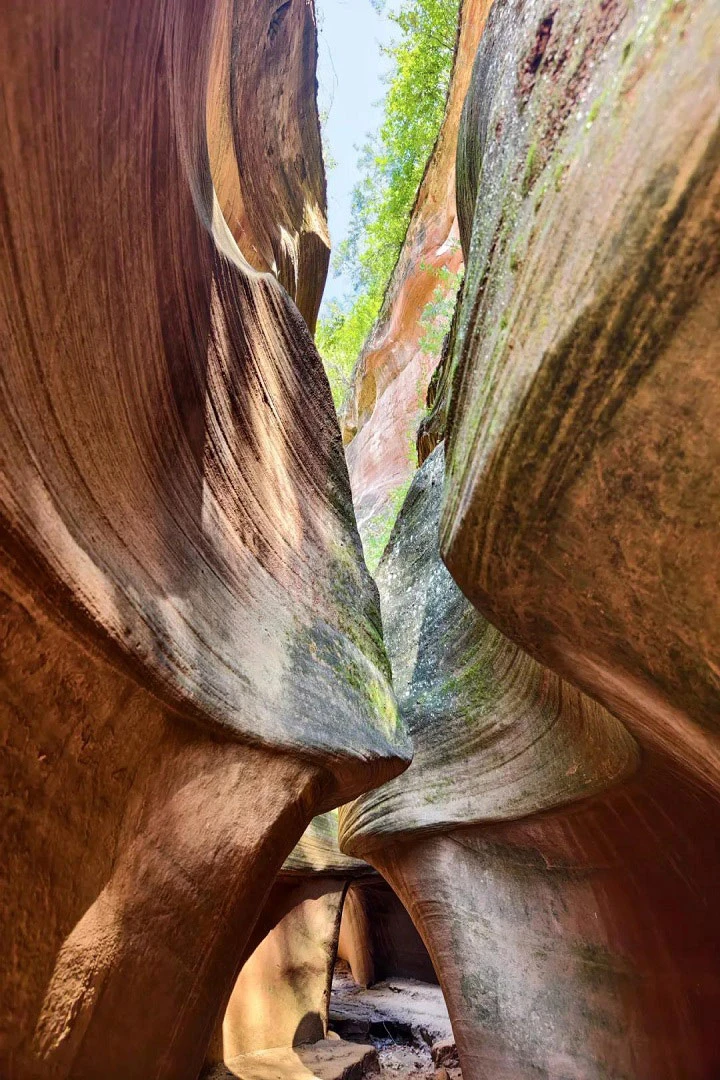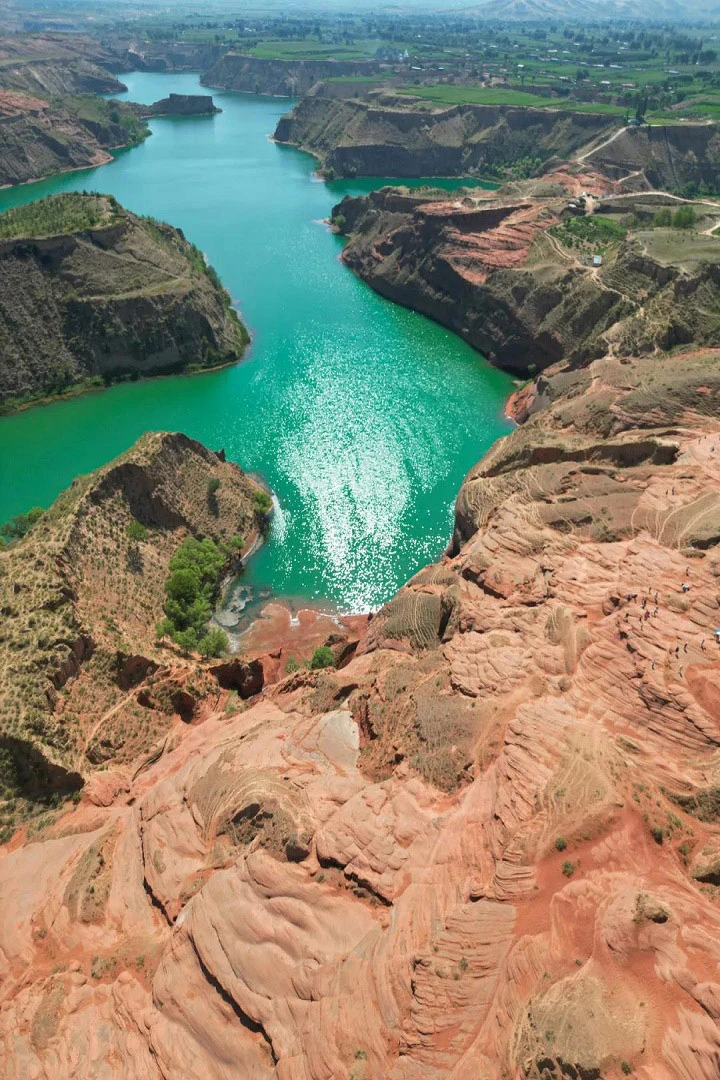Imagine embarking on a weekend adventure from Beijing to a lesser-known destination that promises to leave you in awe. If you happen to be a "Random Flight" user of China United Airlines, you've likely seen the name Yulin, Shaanxi, pop up on your destination list, only to dismiss it as just another "non-popular" tourist spot. However, after spending a weekend exploring this hidden gem in Northern Shaanxi, you'll realize that this region deserves a prime spot on your travel itinerary.
Yulin, often referred to as the "Little Beijing of the North," is a small city in Northern Shaanxi that serves as the perfect starting point for a road trip through a land rich in natural wonders and cultural treasures. Located at the crossroads of the Loess Plateau and the Inner Mongolia Plateau, this region's history is deeply intertwined with the Yellow River's flow and the Great Wall's winding path. Here, the untamed beauty of the highlands hides countless secrets waiting to be discovered.

The Enigmatic Beauty of Northern Shaanxi's Danxia Landforms
Your first stop in this adventure is Jingbian County, 160 kilometers from Yulin, home to the awe-inspiring "Wave Valley," also known as Yanzhaizi. This natural wonder, resembling the famous Paria Canyon in the United States, is a breathtaking display of red sandstone formations that ripple across the landscape like waves of fire. While the Danxia landforms of Zhangye, Lanzhou, and Chishui may be more renowned, Yulin's own version, with its endless red hues and sweeping lines, offers a more rugged and majestic experience.
Wave Valley is the most well-developed area within this Danxia region, with a wooden walkway meandering through the park. A leisurely hike through the valley can take 3 to 4 hours, but every step reveals a new and stunning vista, making it worth every moment. From the fiery Danxia, where the mountains twist and turn like tongues of flame, to the towering red cliffs of the Danxia Wall, where the stark contrast between the lush wetlands and the arid cliffs creates a surreal landscape, this place is nothing short of extraordinary.
Don't miss the "One Line Sky," where the narrow Danxia Canyon feels like a crack in the Earth's crust. The intricate patterns carved by nature, combined with the interplay of light and shadow, will leave you in awe of the planet's artistic prowess. As you follow the walkway along the Danxia formations, be sure to find a spot with a panoramic view to witness the sunset and moonrise. It's a moment where the rough beauty of Northern Shaanxi reveals its romantic side.
Exploring the Hidden Wonders of Mao Alley Canyon and Beyond
While Wave Valley is a must-see, Jingbian County has more to offer. A lesser-known but equally captivating site is the Water Danxia, an undeveloped area that provides the perfect spot to catch a breathtaking sunrise. Here, the Danxia formations sit adjacent to a tranquil lake, where the red cliffs and green waters create a harmonious and picturesque scene. However, the lack of management has led to some unfortunate graffiti on the rocks, a stark reminder of the importance of preserving these natural wonders.
After witnessing the sunrise at Water Danxia, it's time to venture south to Mao Alley Canyon in Zhidan County, about three hours from Jingbian. Often dubbed the "Chinese Antelope Canyon," Mao Alley Canyon is a hidden gem that offers a similar experience to its more famous counterpart in the United States, but with fewer crowds and a more affordable entrance fee.
Mao Alley Canyon may not have the grandiose name, but its narrow paths and intricate rock formations will leave you spellbound. The canyon's roads are so narrow that even a person weighing less than 70 kilograms may find themselves squeezing through tight spots. The canyon, part of the Diaoyan Valley, is characterized by steep, curving walls that flow like smooth, reddish-brown silk. This unique landscape, reminiscent of a cat's graceful movements, explains the canyon's name.
The canyon is divided into six sections, each with poetic names that capture the essence of their distinct formations. Among them, the second section, Heaven and Earth Canyon, the fourth section, Flowing Time Canyon, and the fifth section, Palace Corridor, are particularly enchanting. The smooth, uniformly textured rock faces and natural color transitions make these sections perfect for photography. The winding paths create an illusion of isolation, making it feel as though you've stepped into another world.
The Ancient Ruins of Tongwan City
On your way back to Yulin, take a detour to visit the ruins of Tongwan City, located at the northernmost tip of Jingbian County. Although it's a bit off the beaten path, with an extra two hours of driving, this ancient site is well worth the effort.
Tongwan City, the capital of the Hun state of Xia during the Eastern Jin dynasty, is a place steeped in history. Built in 413 AD by Helian Bobo (赫连勃勃), the leader of the Hun Tiefu tribe, this once-mighty city was constructed by 100,000 laborers over six years. The city, named "Unifying All Under Heaven," was built using a unique technique that gave its walls a bright, plaster-like appearance.
Today, Tongwan City stands as the world's only surviving Hun capital. While much of the site remains buried beneath the sands of the Maowusu Desert, the remnants of its walls, weathered by centuries of wind and rain, still evoke a sense of awe and wonder. Visiting the adjacent museum provides deeper insight into the history of the Hun state and its formidable leader, making the visit even more meaningful.
It's important to note that Tongwan City offers little shade, so if you plan to explore the ruins, consider visiting in the late afternoon when the sun is less intense. Afterward, you can return to Yulin city, where you might have time to explore the old town before heading back home.



